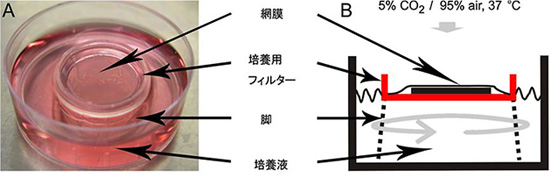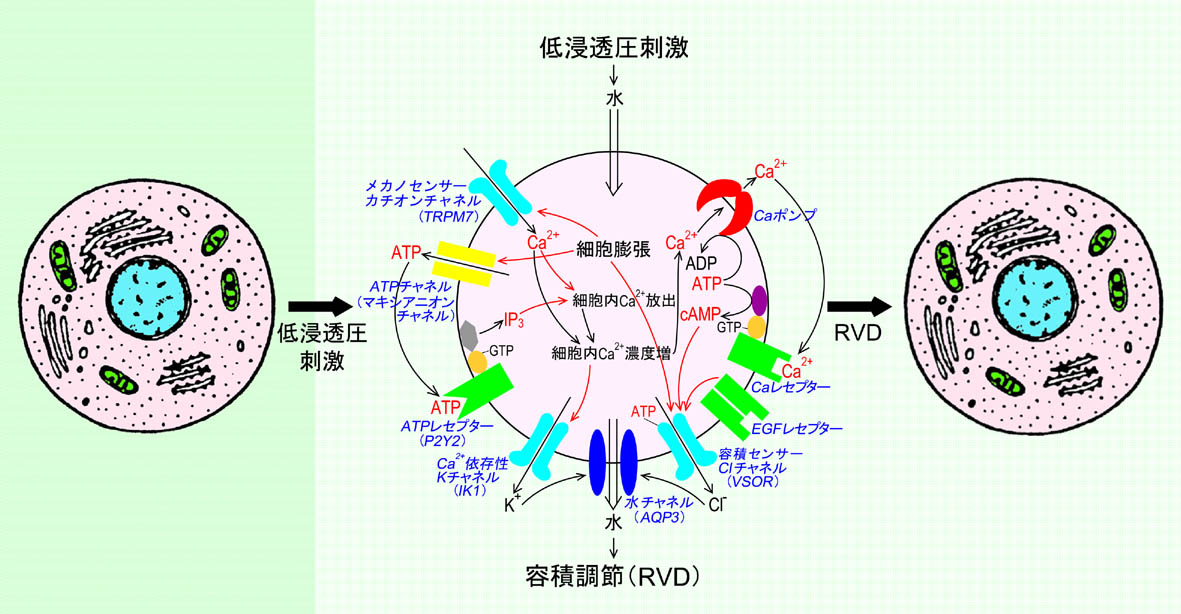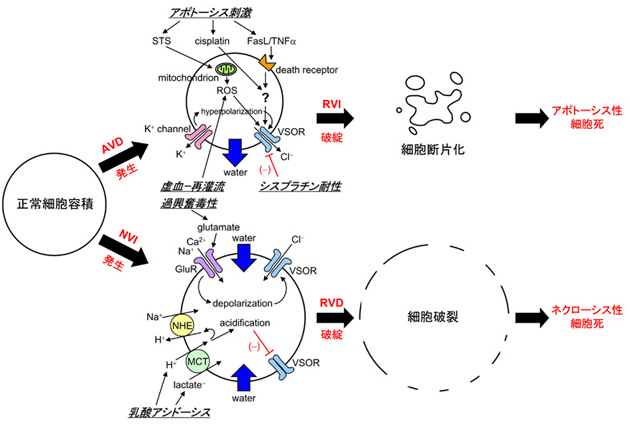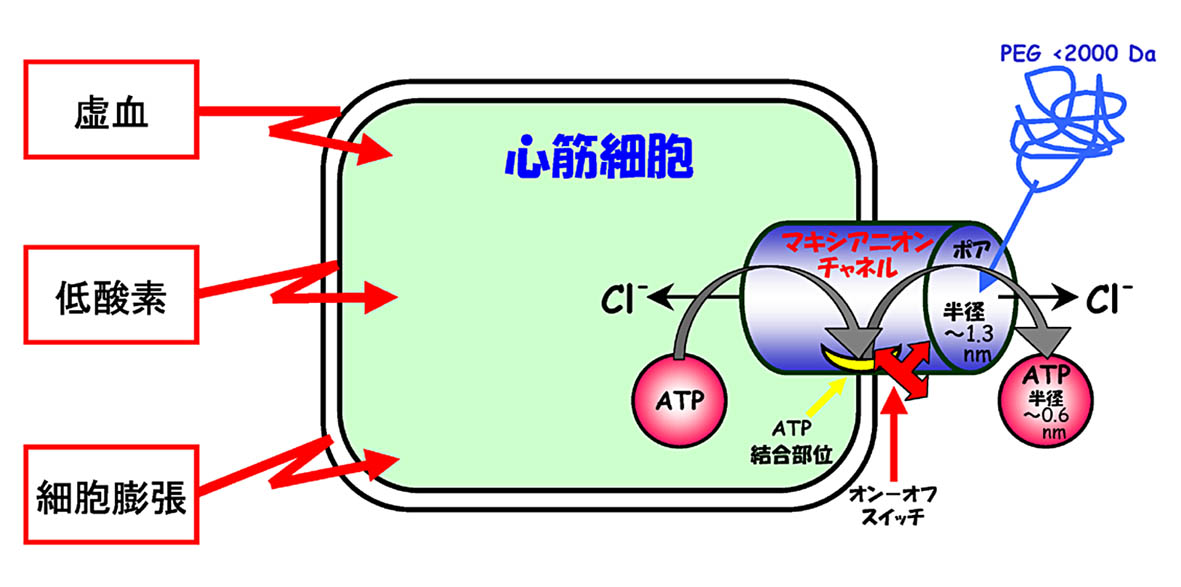All of the cell functions, including neural activities, are performed or supported by operation of bio-molecular sensors, channels (ion and water channels) and transporters (carriers and pumps) located on the membrane. The objectives of our division work are to elucidate molecular mechanisms of most general cell activities, such as volume regulation, absorption/secretion and environmental signal reception, to clarify roles of channels, transporters and receptors in these fundamental functions from the viewpoint of integrative biology, and to throw the light on the relationship between these malfunctions and diseases or cell death, as well as to study the multifunctionality of channel and transporter during cell functions or malfunctions.
The main subjects of our current research are as follows:
(1) “Mechanisms of processing visual information in retina” In the retina, various kinds of bio-molecular sensors express in retinal neurons to form early vision. We investigate visual function in retina, especially visual integration mechanisms in retinal ganglion cells by gene-manipulation of bio-molecular sensors and electrophysiology with organotypic retinal culture system (Fig. 1).
(2) "Molecular mechanisms of cell volume regulation and their physiological roles": Most cells regulate their cell volume even under anisotonic conditions. In the volume regulation mechanisms, a number of channels, transporters and receptors are involved (Fig. 2). We are investigating to identify volume-regulatory membrane machineries, including the volume-sensitive anion channel, and to clarify their physiological roles.
(3) "Induction mechanisms of apoptotic, necrotic and ischemic cell death": Dysfunction of cell volume regulation is associated with necrotic and apoptotic cell death (Fig. 3) which is coupled to persistent swelling (necrotic volume increase: NVI) and shrinkage (apoptotic volume decrease: AVD). Our aim is to pioneer the new field of ‘PHYSIOLOGY OF CELL DEATH’ through elucidation of the mechanisms of cell volume regulation and their dysfunction. We are attempting to focus our studies on the mechanisms of ischemic cell death of brain neurons and cardiac myocytes.
(4) "Molecular mechanisms of channel functions as bio-molecular sensors": Channels are multifunctional proteins involved not only in electric signal generation and ion transport but also in sensing the environmental factors or stress. We aim at elucidating molecular mechanisms of volume- and stress-sensing functions of anion channels, ATP channels and TRP cation channels (Fig. 4).

Fig. 1 Oraganotypic culture of adult retina and gene
transfection [after Koizumi et al, 2007, PLoS One]

Fig. 2 Molecular mechanisms of the
regulatory volume decrease (RVD) and of volume-sensor Cl channel (VSOR) activation. [after Okada et al. 2001, J.
Physiol. 532, 3-16]

Fig. 3 Roles of channels and transporters in the induction of apoptotic volume
decrease (AVD) and apoptotic cell death as well as in that of necrotic
volume increase (NVI) and necrotic cell death. [after Okada et al. 2009,
J Physiol.

Fig. 4 Stress-sensing, ATP-releasing maxi-anion channel
in cardiomyocytes.
[after Sabirov & Okada 2005, Purinergic
Signalling. 1, 311-328]
 This site is best viewed with Netscape Navigator 3.0 or later.
We express great thanks to dpi web graphix for the design of our web pages.
This site is best viewed with Netscape Navigator 3.0 or later.
We express great thanks to dpi web graphix for the design of our web pages.
Laboratory of Correlative Physiology